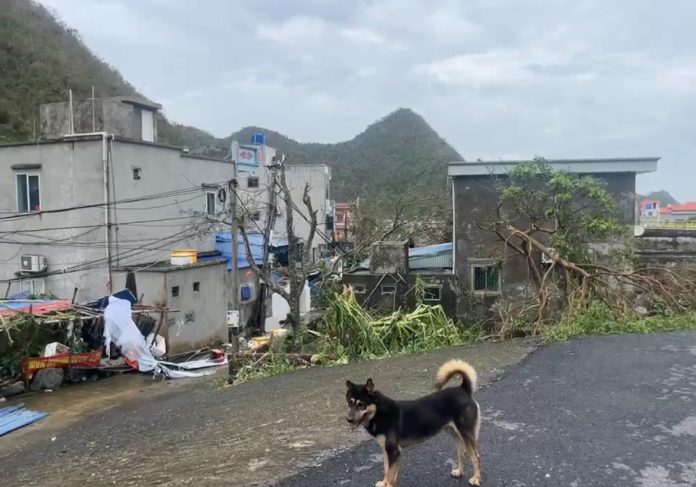At least 59 people have died in Vietnam following the landfall of Typhoon Yagi, the most powerful storm to strike the Southeast Asian country in decades. In addition to the tragic loss of life, dozens remain missing, primarily due to landslides and floods triggered by the typhoon, according to Vietnam’s disaster management agency.
The typhoon, which made landfall on Saturday, wreaked havoc across the country, particularly in the northern regions. A steel bridge collapsed in Phu Tho province on Monday, while millions of people lost power during the storm. Though Yagi was downgraded to a tropical depression on Sunday, its destructive force had already left a lasting impact.
One particularly harrowing incident involved a bus carrying 20 people that was swept away by the floods, and rescue efforts have been underway for those who remain missing. State media reports that nine people lost their lives during the typhoon itself, with at least another 50 killed in the subsequent floods and landslides.
Widespread Impact and Continuing Dangers
Vietnam’s weather agency has issued warnings of further floods and landslides in the days ahead. Meanwhile, state-run energy provider EVN confirmed that over 5.7 million customers lost electricity over the weekend, though nearly 75% of those affected have had their power restored.
The collapse of the steel bridge over the swollen Red River in Phu Tho province was a stark reminder of the storm’s ferocity. Several motorbikes and cars plunged into the water during the disaster, and ongoing rescue operations have so far pulled three survivors from the river, all of whom have been taken to hospital.
In Haiphong, a city on Vietnam’s northern coast, managers at industrial parks and factories reported extensive damage and power outages. “Everyone is scrambling to make sites safe and keep stocks dry,” said Bruno Jaspaert, head of DEEP C industrial zones. Additionally, the walls of an LG Electronics factory collapsed, as witnessed by Reuters reporters on-site.
Government Response and Aid Efforts
Prime Minister Pham Minh Chinh visited Haiphong on Sunday to assess the damage and approved a relief package of $4.62 million (£3.5 million) to help the port city recover from the storm. The damage caused by Yagi also extended to Vietnam’s vital agricultural sector, with nearly 116,192 hectares of rice paddies destroyed.
Before making landfall in Vietnam, Typhoon Yagi had already taken a heavy toll on neighbouring countries, claiming the lives of at least 20 people in the Philippines and three in China.
Eyewitness Accounts and Community Resilience
Survivors on the ground have described the terror of living through the storm and its aftermath. Two travellers from Weymouth in Dorset, Sam and Jazz, staying on the island of Cat Ba, shared a harrowing account of their experience. “It has been truly devastating to witness the destruction of Cat Ba after it was hit by Typhoon Yagi. Our thoughts are with all those who have tragically lost their lives and with their families across Vietnam,” they said.
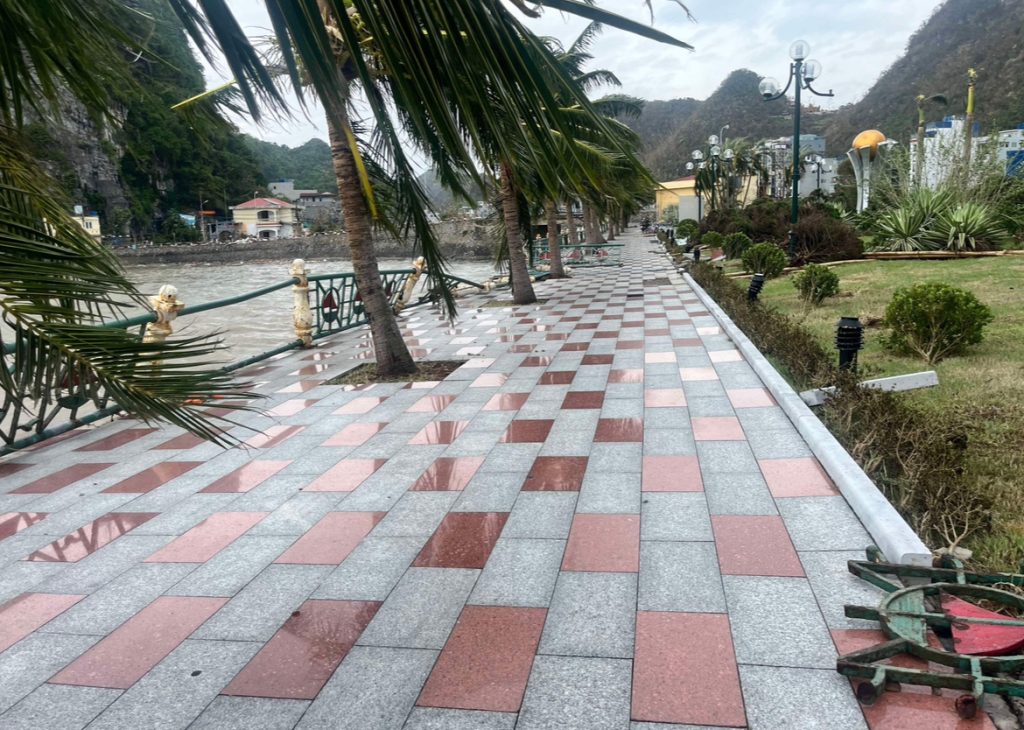
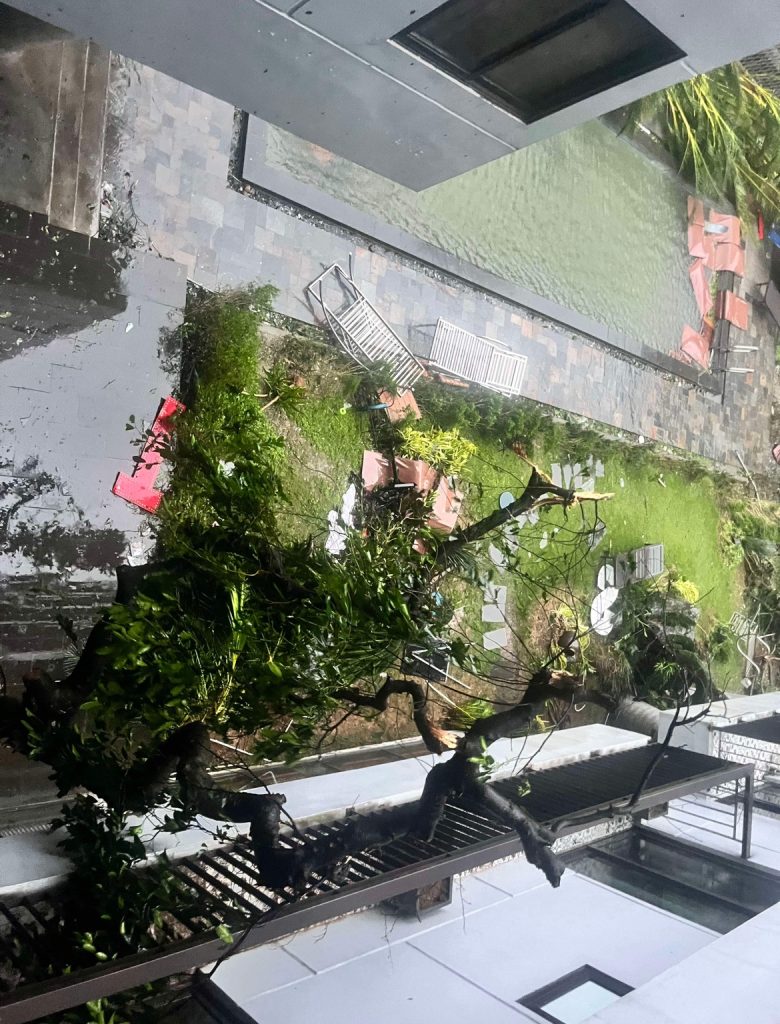
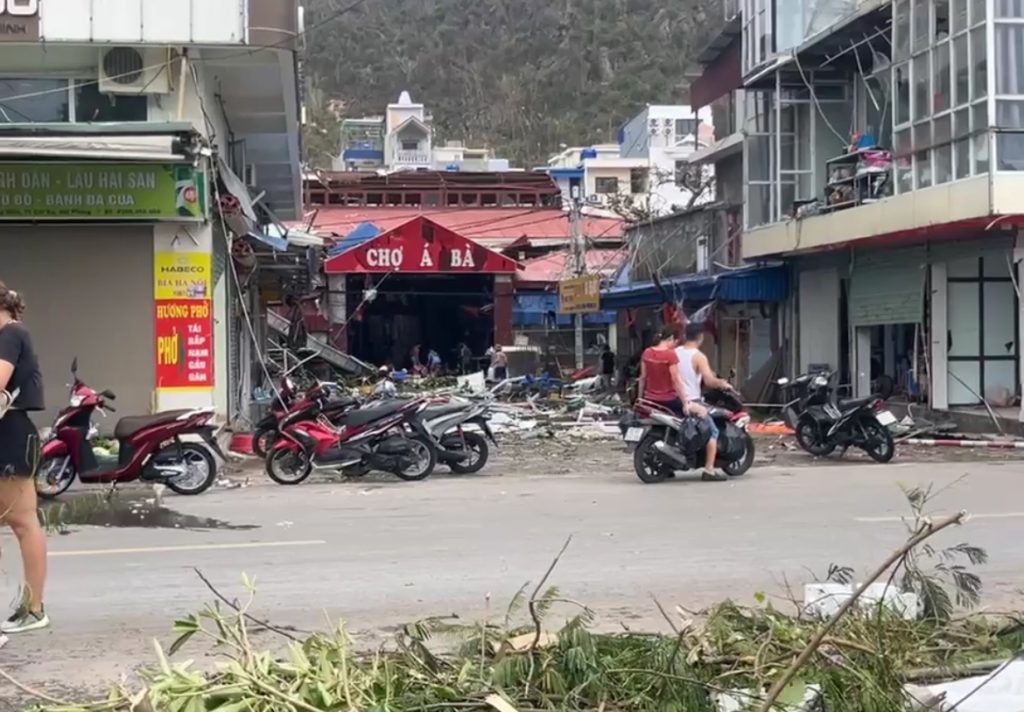
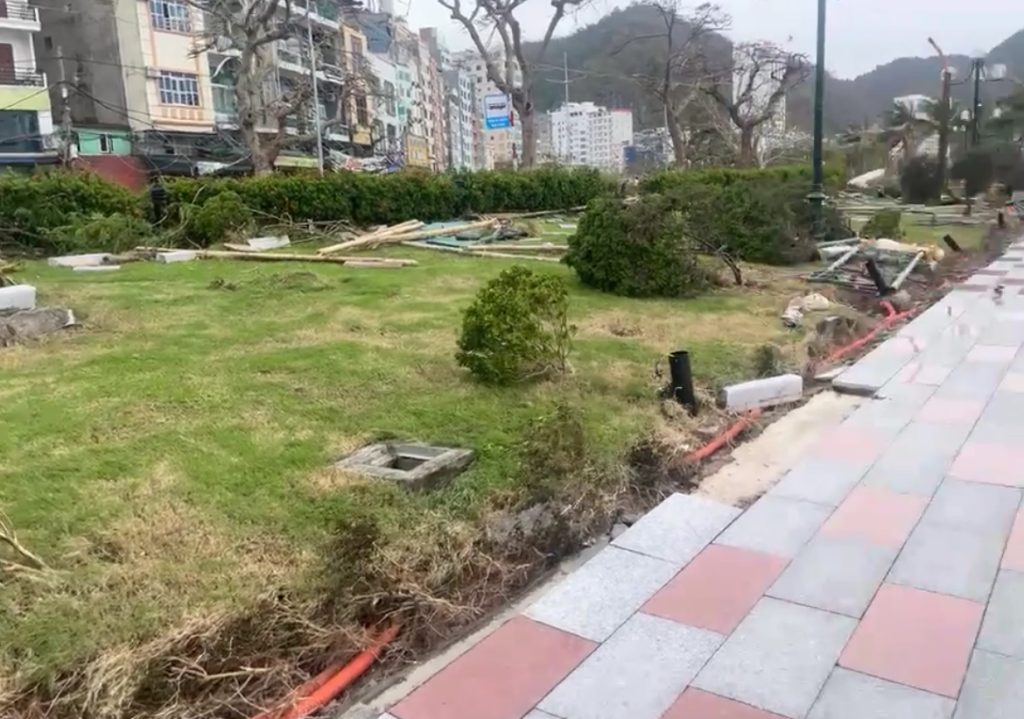
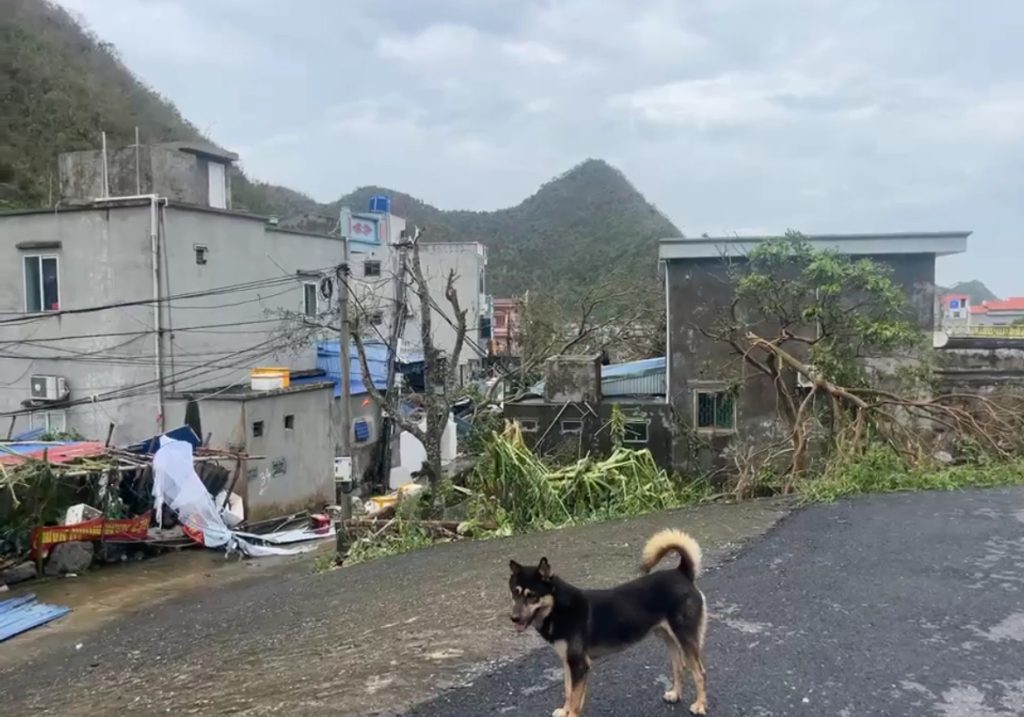
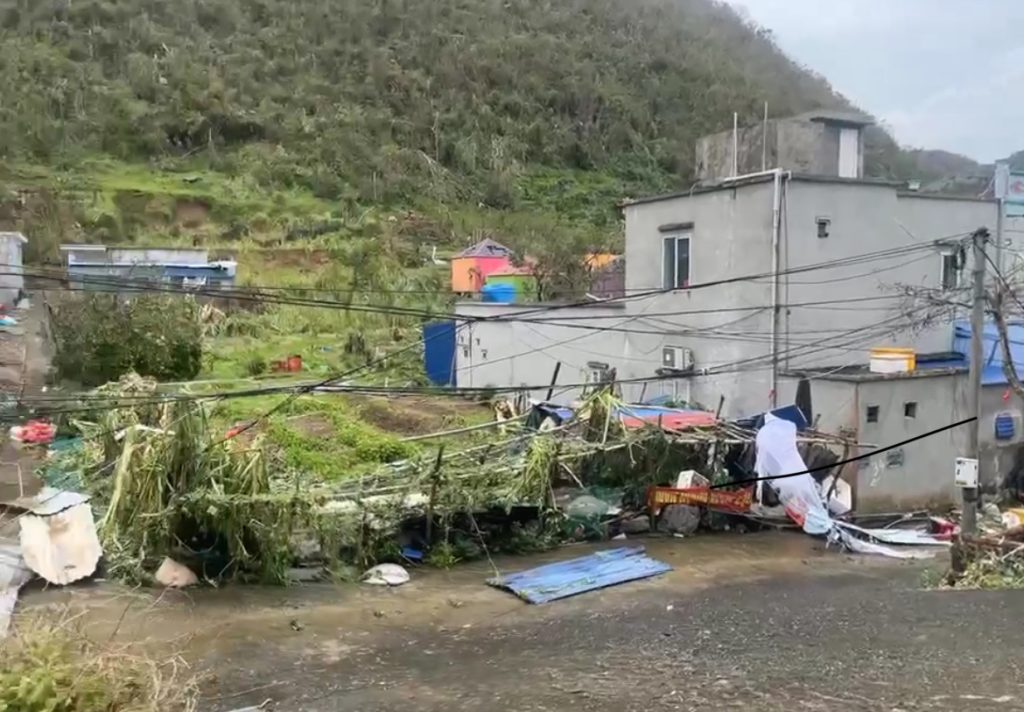

Sam and Jazz praised the Buffalo Hostel on Cat Ba for keeping guests safe during the disaster. “The owner transformed the hostel into a home for us over the past few days and braved the storm to reach us,” they said. Despite the devastation, they described the overwhelming warmth and community spirit they encountered. “In a time of immense anguish, the community spirit on Cat Ba has been a shining example of humanity’s capacity for togetherness and love. We were still greeted with warm smiles and positive attitudes, even though there was no water, electricity, or signal to contact the outside world.”
Climate Change and Intensifying Storms
Experts have highlighted the role of climate change in the increasing severity of storms like Yagi. Benjamin Horton, director of the Earth Observatory of Singapore, explained that warmer ocean waters are fuelling stronger storms. “Warmer ocean waters provide more energy to fuel the storms, leading to increased wind speeds and heavier rainfall,” Horton noted.
As Vietnam continues to grapple with the aftermath of Typhoon Yagi, the resilience of its communities and the speed of recovery efforts will be critical in restoring normality to the region. The country is no stranger to extreme weather, but the increasing intensity of storms in recent years raises concerns about the future.
Looking Forward
In the wake of such devastation, the people of Vietnam are bracing themselves for the long road to recovery. While emergency services continue rescue operations and begin clearing debris, those affected by the storm are left to rebuild their lives. The resilience of the community, as witnessed on Cat Ba and across the country, offers hope in the face of adversity.
For now, survivors are reflecting on the lives lost and the destruction left behind, with thoughts also turning to how such storms might be mitigated in the future. The road ahead will be challenging, but as this crisis has shown, the strength of the human spirit remains a powerful force in the face of catastrophe.
For those wishing to visit Vietnam in the future, Sam and Jazz encouraged support for local businesses such as Buffalo Hostel and Central Backpackers, both of which prioritised the safety and happiness of their guests during the storm.
As the country moves forward, the solidarity of its people and the support of the international community will be essential in helping Vietnam recover from the worst typhoon it has faced in decades.
KEEP US ALIVE and join us in helping to bring reality and decency back by SUBSCRIBING to our Youtube channel: https://www.youtube.com/channel/UCQ1Ll1ylCg8U19AhNl-NoTg AND SUPPORTING US where you can: Award Winning Independent Citizen Media Needs Your Help. PLEASE SUPPORT US FOR JUST £2 A MONTH https://dorseteye.com/donate/

